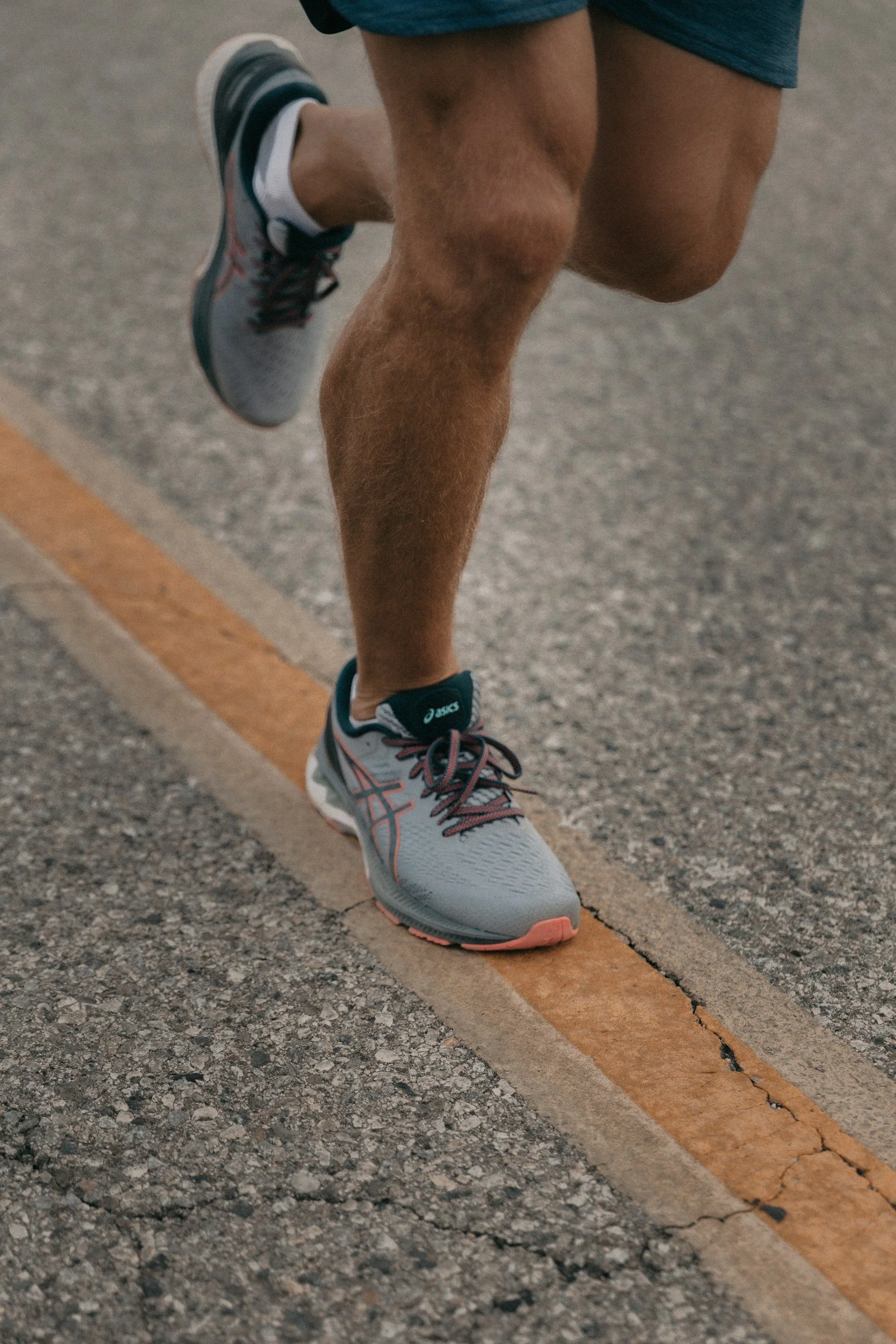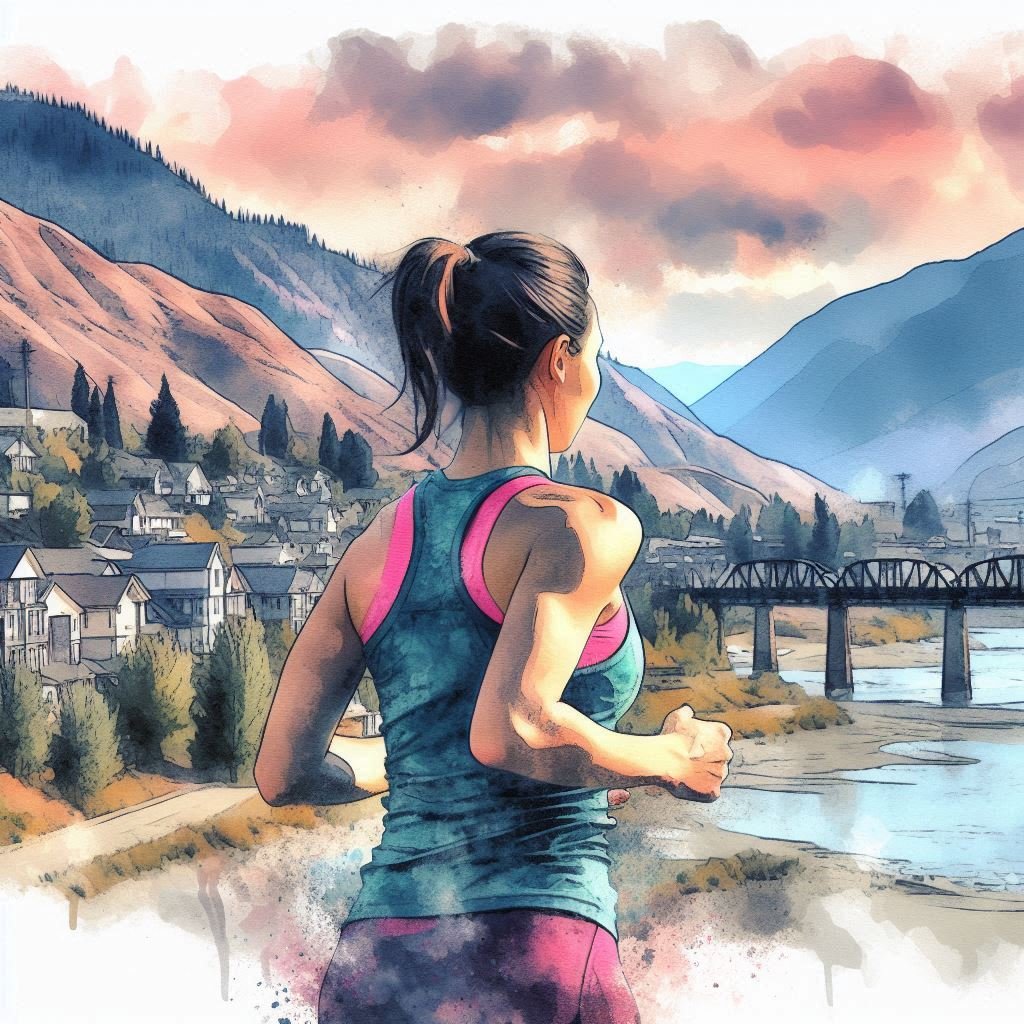Run Pain-Free in Kamloops with These RMT-Approved Picks
Updated: July 2025 | By Well+Able Integrated Health
Running is one of the best ways to stay fit, connect with nature, and explore Kamloops’s incredible trails. But if you’re battling plantar fasciitis, Achilles tendonitis, or nagging arch pain, every step can feel like a setback.
The right running shoes can make all the difference. As a clinic that treats both athletes and chronic pain sufferers, we’ve curated this guide to help you find the support you need to stay active, comfortable, and injury-free.
Running in Kamloops, BC: Beauty Meets Impact
Whether you're pushing your pace up the hills of Kenna Cartwright Park, enjoying the flat stretches of the Rivers Trail, or cruising along the South Thompson River, Kamloops offers something for every runner.
But the varied terrain—steep hills, gravel paths, and concrete walkways—can put serious stress on your feet, heels, and tendons. Wearing the wrong shoes? That’s a fast track to injury.
Let’s break down which shoes our RMTs recommend for two of the most common running injuries.
Best Running Shoes for Plantar Fasciitis
Plantar fasciitis causes sharp heel pain, especially in the morning or after long runs. It’s triggered by inflammation in the band of tissue that connects your heel to your toes. The right shoes should provide:
High arch support
Soft, shock-absorbing cushioning
A firm but flexible sole
op 5 Running Shoes for Plantar Fasciitis
1. Brooks Adrenaline GTS 22
✔️ GuideRails stability system | Arch support | Balanced cushioning
→ Ideal for runners who need both structure and comfort.
2. Asics Gel-Kayano 29
✔️ Dynamic DuoMax support | Rearfoot gel cushioning
→ Great for moderate overpronators with heel pain.
3. New Balance 990v6
✔️ ENCAP midsole | Durable and supportive
→ Offers premium build quality with long-lasting heel stability.
4. Hoka One One Clifton 9
✔️ Lightweight foam | Meta-Rocker sole
→ Smooth heel-to-toe transitions that reduce plantar strain.
5. Saucony Guide 16
✔️ PWRRUN cushioning | Medial support post
→ Perfect balance of soft comfort and pronation control.
Best Running Shoes for Achilles Tendonitis
Achilles tendonitis shows up as stiffness or pain at the back of your heel. Tight calves, poor shoe structure, or sudden increases in mileage often cause it. Look for:
Elevated heel-to-toe drop
Good ankle and heel support
Extra cushioning
Top 5 Running Shoes for Achilles Tendonitis
1. Asics Gel-Nimbus 25
✔️ Soft gel pods | High-stack midsole
→ Exceptional shock absorption to protect the Achilles.
2. Brooks Ghost 15
✔️ Neutral support | Smooth transitions
→ Cushioned ride with reduced strain on the back of the foot.
3. Saucony Triumph 20
✔️ FORMFIT hug | Thick midsole foam
→ Plush but responsive feel, especially for recovery runs.
4. Hoka One One Bondi 8
✔️ Oversized cushioning | Meta-Rocker roll
→ Reduces heel strike shock and improves stride efficiency.
5. New Balance 1080v12
✔️ Fresh Foam X | Sock-like upper
→ Stable and forgiving for sore Achilles tendons.
Bonus: Shoes with Arch Support for Flat Feet or Collapsed Arches
If you struggle with flat feet, look for shoes with motion control or built-in arch height. The Brooks Adrenaline, Saucony Guide, and New Balance 990 all offer excellent arch reinforcement.
How Often Should You Replace Your Running Shoes?
Most running shoes last between 400–500 km, depending on your weight, terrain, and gait. Worn-out shoes lose their support and cushioning, increasing your risk of injury. A good rule of thumb:
👉 If your knees, heels, or arches start hurting—check your shoes first.
From the RMTs at Well+Able Integrated Health
At Well+Able, we help runners in Kamloops overcome pain and stay moving—whether you're prepping for a half marathon or just trying to enjoy a weekend jog without flare-ups.
Our Registered Massage Therapists (RMTs) treat:
Achilles tendonitis
Plantar fasciitis
Shin splints
Chronic or complex pain
We use a mix of manual therapy, strengthening, and movement education to get you back on track—literally.
Ready to Run Without Pain?
If your feet or tendons are holding you back, we can help. Book an appointment and let’s assess your movement, suggest the right footwear, and create a recovery plan that works.
Book Your Visit
Located in downtown Kamloops | wellandable.ca
Understanding Achilles Tendonitis
Achilles tendonitis is a common injury when the tendon connecting the calf muscles to the heel bone becomes inflamed. This condition often results from overuse, improper footwear, or a sudden increase in physical activity. Runners with Achilles tendonitis need shoes that offer good heel support and cushioning to reduce strain on the tendon.
Top 5 Running Shoes for Achilles Tendonitis
Asics Gel-Nimbus 25
Key Features: Excellent heel cushioning, gel technology, and a supportive midsole.
Why It’s Great: The Gel-Nimbus 25 provides superior shock absorption and stability, crucial for alleviating the strain on the Achilles tendon.
Brooks Ghost 15
Key Features: Soft cushioning, balanced support, and a comfortable fit.
Why It’s Great: The Ghost 15’s smooth ride and ample cushioning make it ideal for runners with Achilles tendonitis.
Saucony Triumph 20
Key Features: Plush cushioning, FORMFIT technology, and durable outsole.
Why It’s Great: The Triumph 20 offers a supportive yet cushioned ride, helping to reduce pressure on the Achilles tendon.
Hoka One One Bondi 8
Key Features: Maximum cushioning, meta-rocker technology, and broad base.
Why It’s Great: The Bondi 8’s thick cushioning and stable design help to absorb impact and reduce stress on the Achilles tendon.
New Balance 1080v12
Key Features: Fresh Foam cushioning, stretchy knit upper, and heel support.
Why It’s Great: The 1080v12 combines a soft, cushioned feel with excellent heel support, making it a top choice for those with Achilles tendonitis.
Understanding Plantar Fasciitis
Plantar fasciitis is a painful condition caused by inflammation of the plantar fascia, the thick band of tissue that runs along the bottom of the foot. It often results in sharp heel pain, especially during the first steps in the morning. Runners with plantar fasciitis need shoes with excellent arch support, cushioning, and a good fit to alleviate pressure on the plantar fascia.
Top 5 Running Shoes for Plantar Fasciitis
Brooks Adrenaline GTS 22
Key Features: GuideRails support system, cushioning, and stability.
Why It’s Great: The Adrenaline GTS 22 provides excellent arch support and stability, reducing strain on the plantar fascia.
Asics Gel-Kayano 29
Key Features: Dynamic DuoMax support, gel cushioning, and flexible upper.
Why It’s Great: The Gel-Kayano 29 offers a supportive and cushioned ride, ideal for managing plantar fasciitis.
New Balance 990v6
Key Features: ENCAP midsole, supportive design, and durable construction.
Why It’s Great: The 990v6 combines stability and cushioning, offering excellent support for plantar fasciitis sufferers.
Hoka One One Clifton 9
Key Features: Lightweight cushioning, meta-rocker technology, and supportive fit.
Why It’s Great: The Clifton 9 provides a cushioned and supportive ride, reducing the impact on the plantar fascia.
Saucony Guide 16
Key Features: PWRRUN cushioning, medial post support, and structured fit.
Why It’s Great: The Guide 16’s combination of cushioning and support helps to alleviate foot pain caused by plantar fasciitis.
Final Thoughts from Well+Able Integrated Health
Choosing the right running shoes is essential for preventing and managing conditions like Achilles tendonitis and plantar fasciitis. At Well+Able Integrated Health, we understand the importance of proper footwear in maintaining a healthy and active lifestyle. Our team of Registered Massage Therapists (RMTs) have a particular focus on treating sports injuries and helping individuals with chronic, complex, or ongoing pain complaints. Investing in shoes that offer the proper support, cushioning, and fit can significantly impact your running experience. Remember to replace your running shoes regularly, as worn-out shoes can contribute to injuries. Happy running in Kamloops!




